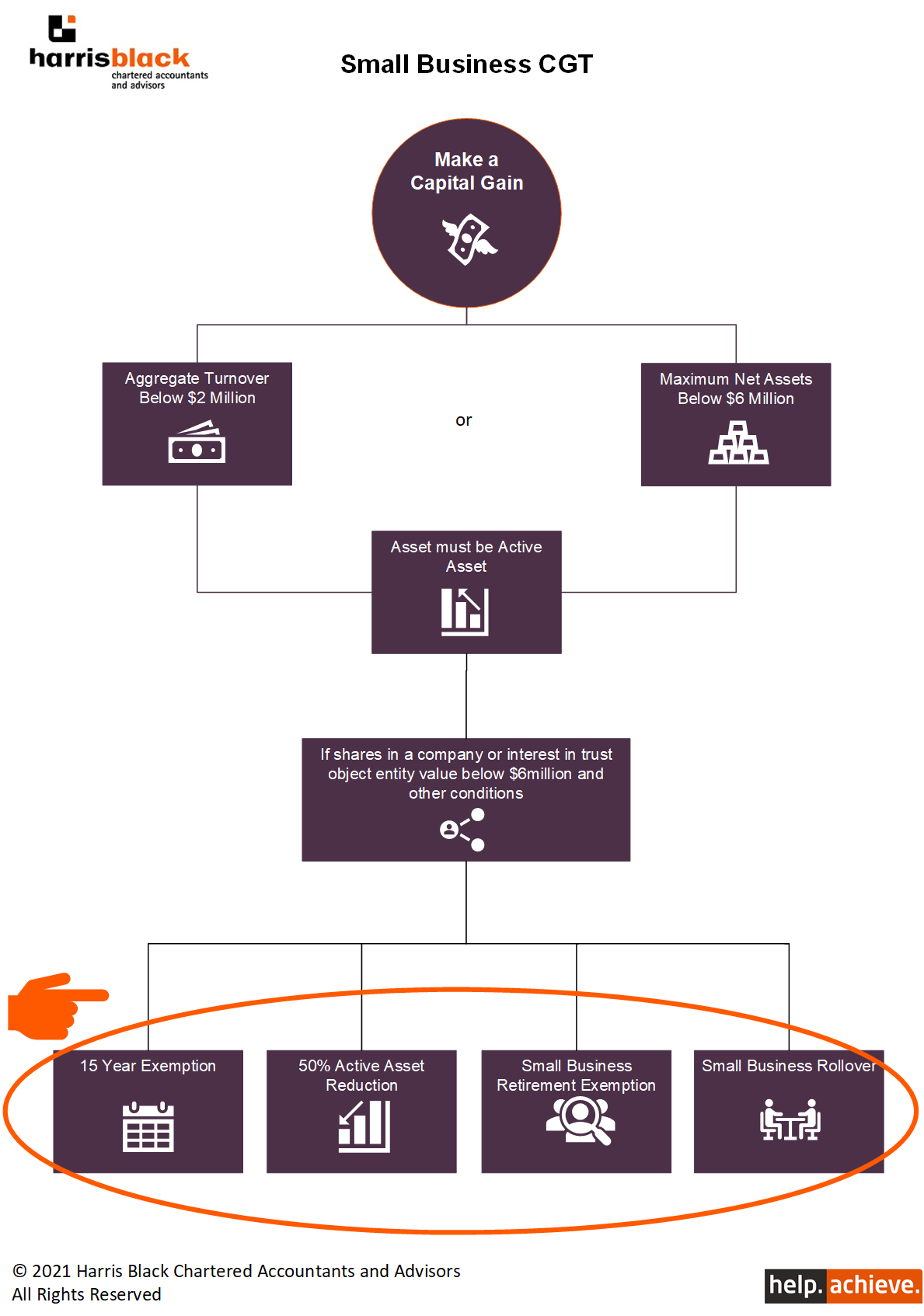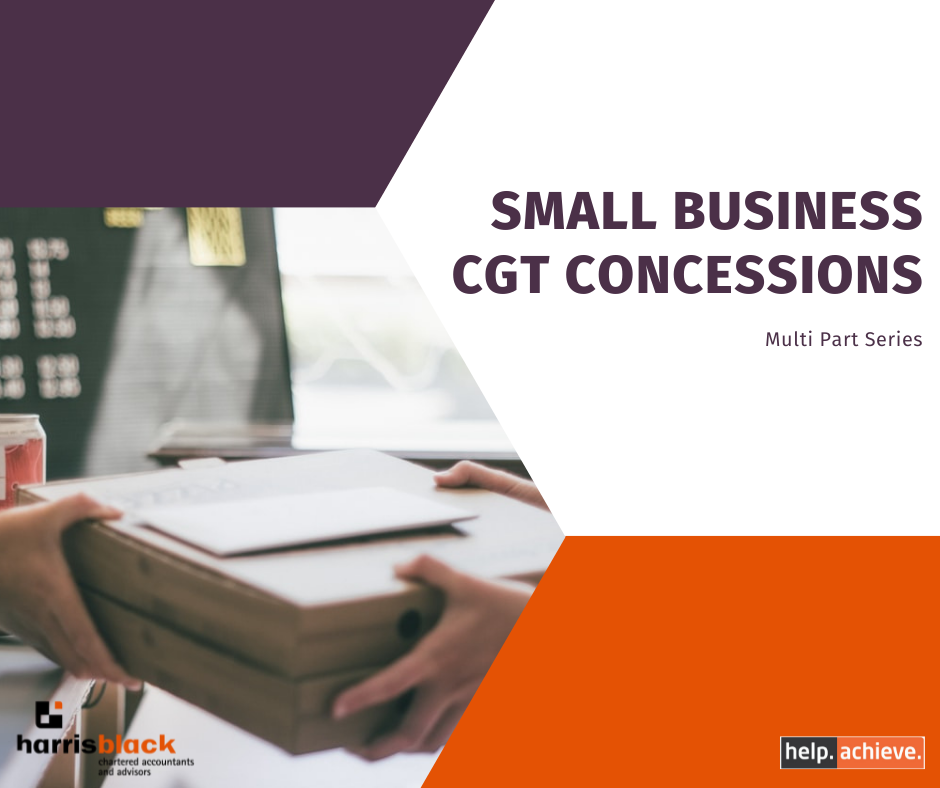
By Bjorn Kirberg
Once all of the conditions have been met, discussed in Part 1, Part 2 and Part 3 (see our previous newsletters), it is time to get to fun part – utilising the concessions.
These exemptions are as follows:
1) 15 Year Exemption
Provided conditions are met, full exemption of capital gain up to CGT cap ($1.615m for 2021-22).
Business must have been owned continuously for at least 15 years, significant individual is retiring and at least 55 years of age.
This is by far the most difficult exemption to pass.
Amount can be contributed to superannuation if choice is made.
2) 50% Active Asset Reduction
Capital gain reduced by 50%. Can be used in addition to the general CGT discount making the discount effectively 75% (except companies).
This exemption is available to all entity types, however companies and unit trusts may not necessarily want to use this concession.
3) Small Business Retirement Exemption
Can disregard a capital gain up to a lifetime limit of $500,000 per significant individual.
If under 55, must contribute amount to a superannuation fund. If 55 or over, no need to contribute to a superannuation fund however can voluntarily.
Despite the name, you do not actually need to retire.
Correct elections and timing is important.
4) Small Business Rollover
Allows deferral of capital gain by rolling over the gain to a replacement active asset.
Limitation of what replacement assets can be purchased.
Time limit of 2 years to purchase a replacement asset.
Summary
This 4-part series is only a snapshot of the Small Business CGT Concessions.
The rules are complex and a detailed review of each scenario is required. The ATO have advised that this is an area that they will keep focusing on, even years after the concessions have been claimed.


